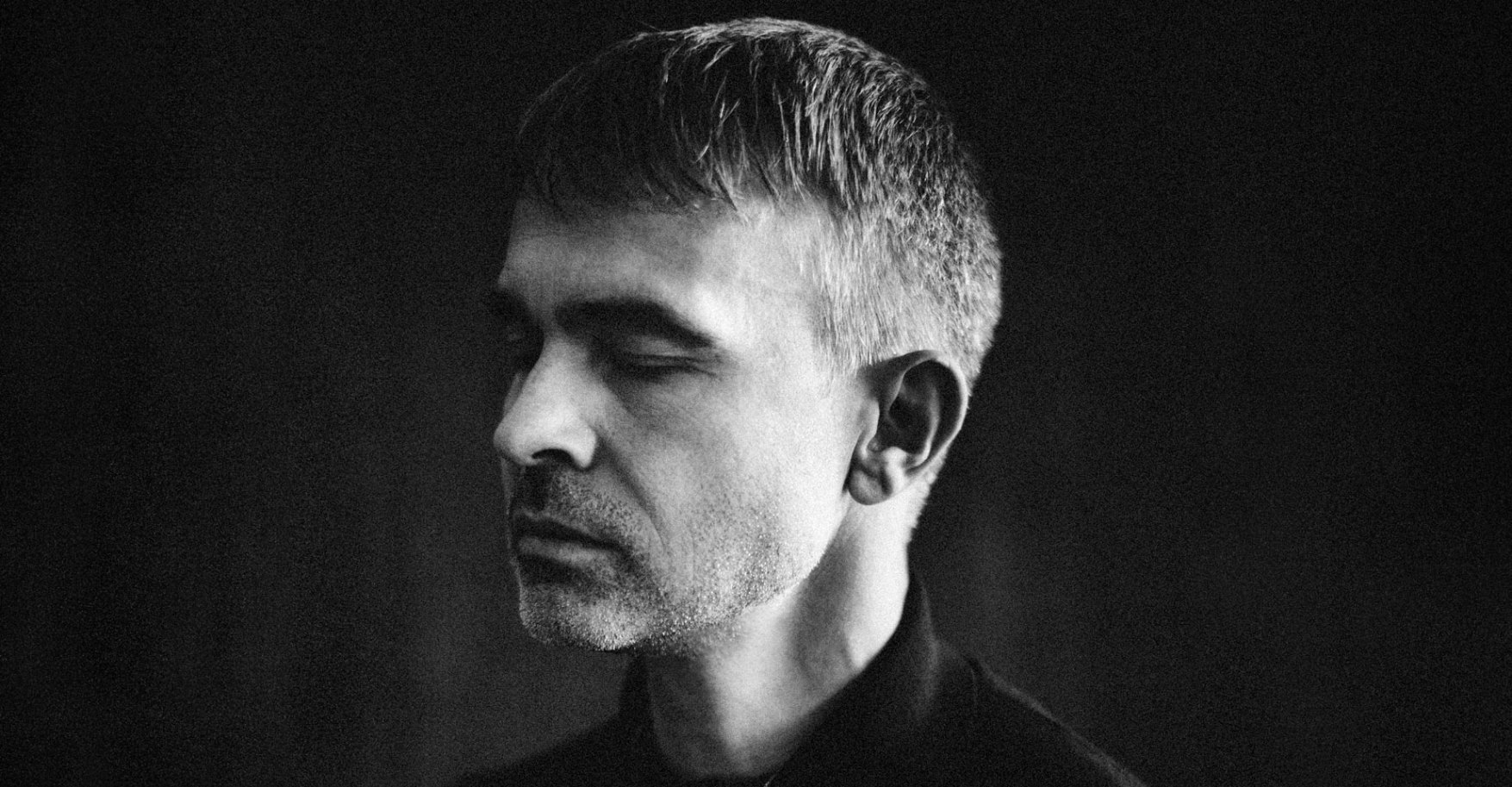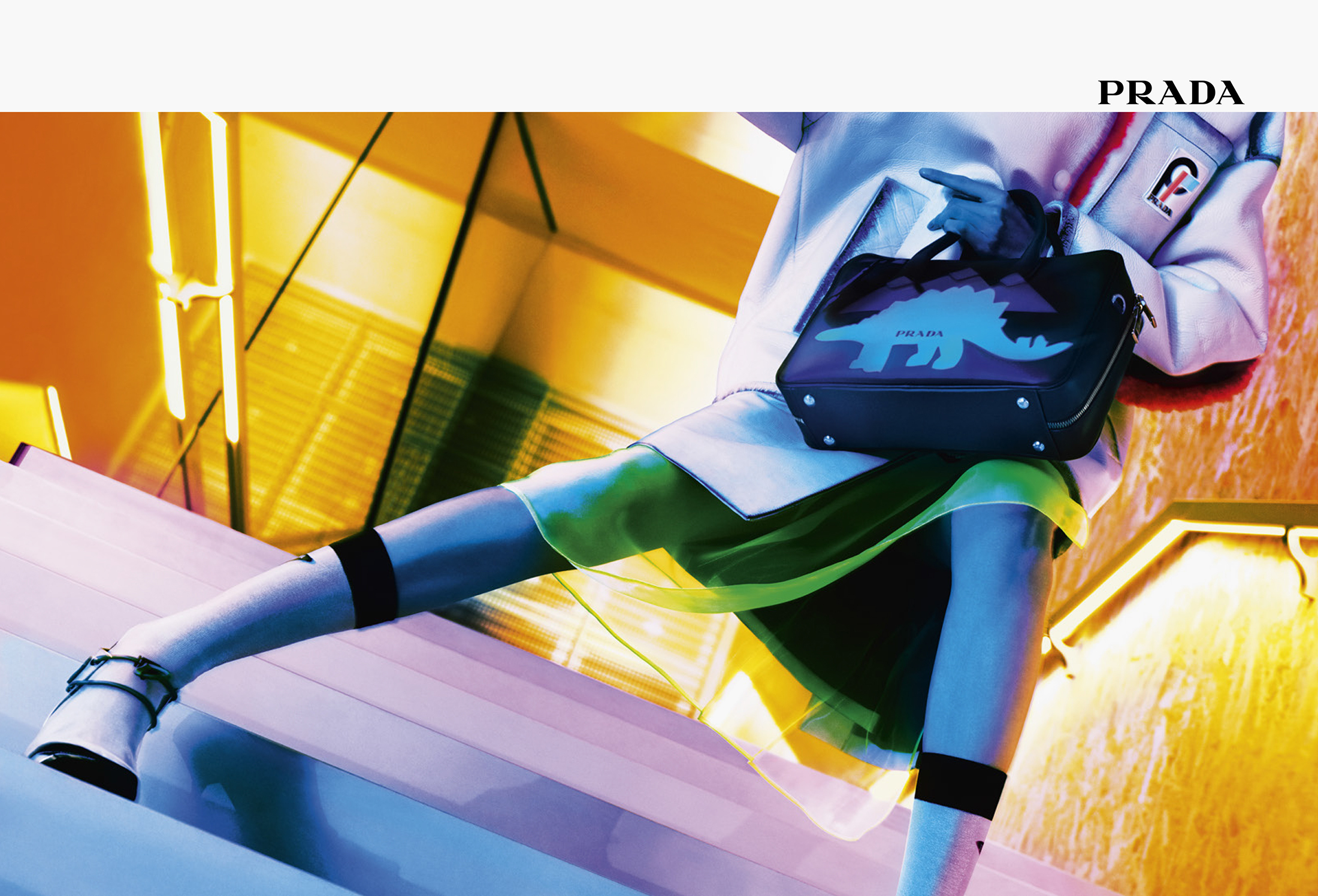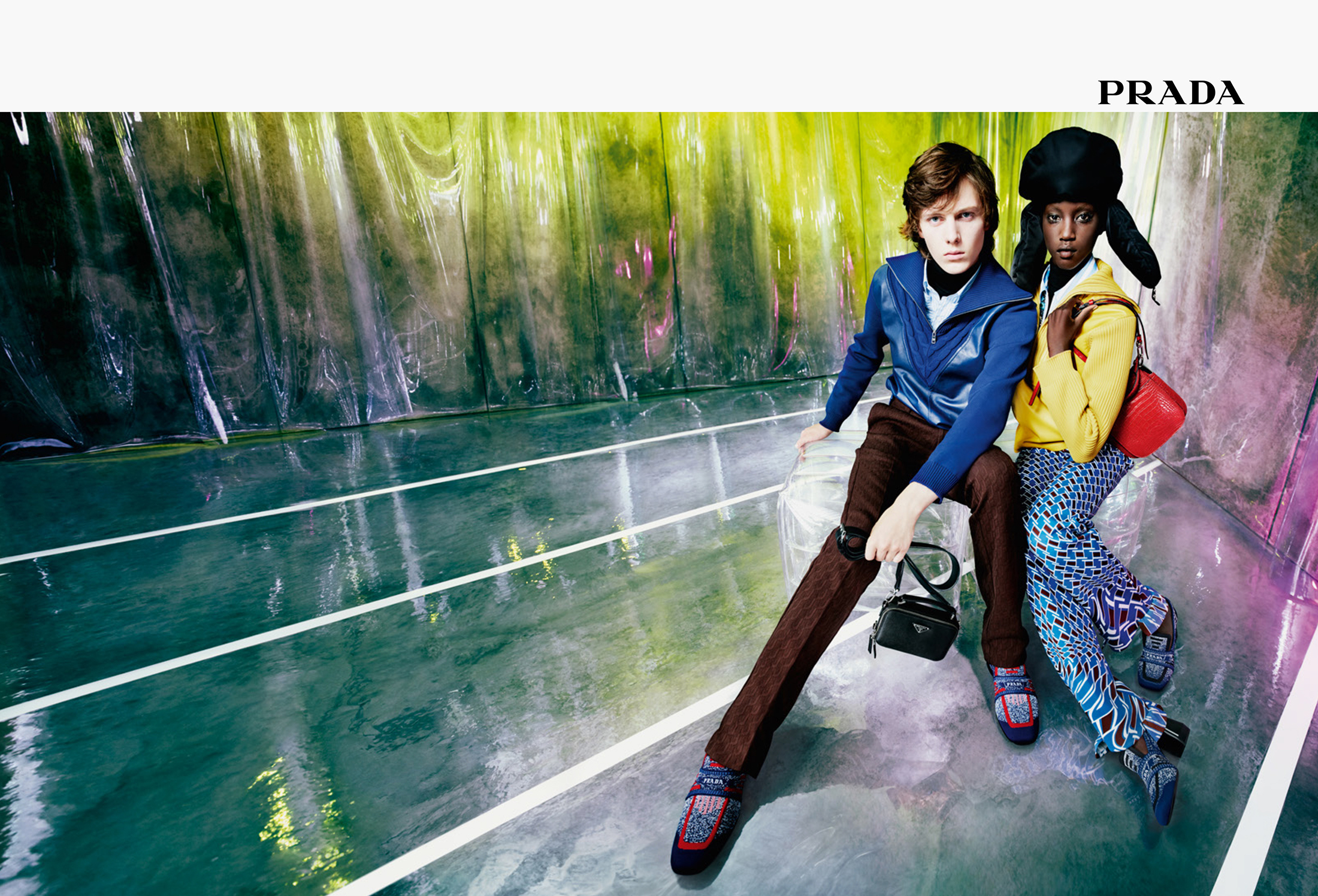With an artisanal eye that blends genres from the culture of youth to the aspirational dreams of fashion, Antwerp based photographer Willy Vanderperre has transcended the confines of ‘fashion’ photographer to become a modern anthropologist of desire, coming of age, and suburban isolation.
With a foundation in fashion design, laid while attending the Royal Academy of Fine Arts (Antwerp), Vanderperre switched from fashion to photography while still in school. His understanding of the craft of design helped to bridge his success as an editorial contributor to publication such as AnOther, AnOther Man, Love, US Vogue, and more. For the past 20 years Vanderperre has been a highly sought out campaign photographer lensing for houses such as Prada, Raf Simons, Calvin Klein, Christian Dior, Dior Homme, Jil Sander and others.
Vanderperre has released several books, notably ‘The Power of Theatrical Madness II’, capturing Jan Fabre’s company during the revival of the dance-theatre production ‘The Power of Theatrical Madness’ and ‘635’, a book that recorded each of Vanderperre’s Instagram posts up until the point of the publication’s printing in 2015. Of recent he released his first short feature film as a director, ‘Naked Heartland,’ a story of three adolescents growing up in the Bible Belt of Flanders, struggling with troubles of their age.
The Impression’s Kenneth Richard sat with the talented artisan to chat about his career, the advent of digital, art’s influence, exploring new mediums, the rise of film, developing teams and ad campaigns, and creating without any fear of judgement.
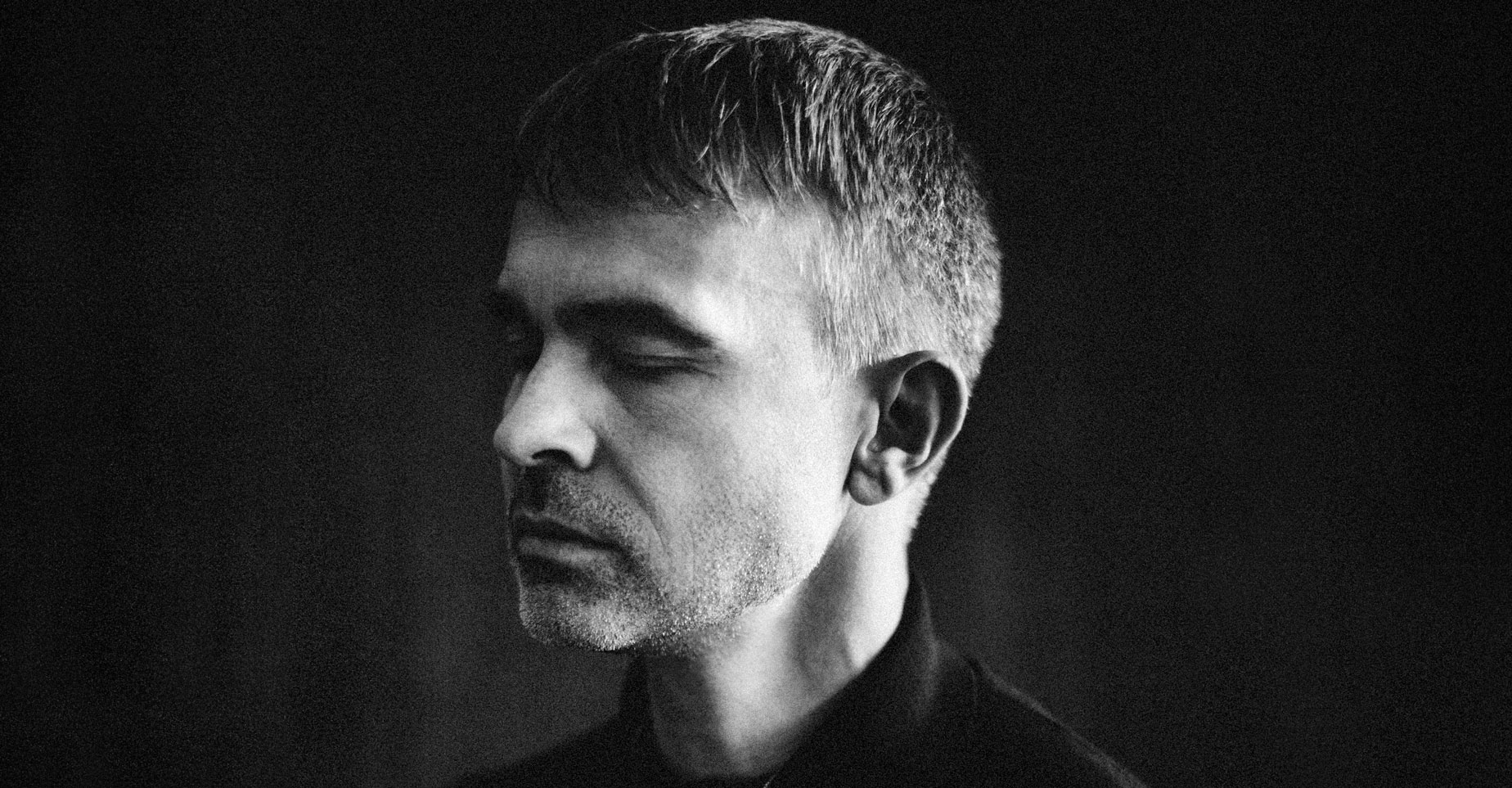
Kenneth Richard: Willy, thanks for sitting with us to learn more about you. When, and perhaps more importantly why, did you first pick up a camera?
Willy Vanderperre: I was always a curious kid, always interested in where things come from and in the story behind the story. Whenever I picked up a book, I would read the last pages first as I liked to know how it ended. To get to the end is what excites more than the actual ending. 15 turning 16, at art college, we got a taste of everything, from drawing to painting and from architecture to ceramics, but photography was disregarded. That intrigued me a lot, as I didn’t understand why that specific form of art/expression was left out. So on Saturdays at ‘the weekend academy’, that is what it was called, I started to experiment with photography. It was really a curiosity, wondering why this art form was left out of college. That is what drew me to it.
After the first sessions in that studio at ‘the weekend academy’, I was fascinated by the way your eye frames an environment, the abstraction of what you see, the focus that gets sharpened on a certain point/person/object. It began to infuse my daily life, but more in an intriguing way than in an active way. I tried to look at things as if I was looking through a lens, more focused if you will. But at that age, I never walked around with a camera on my back. Photography was something exclusive. You had to own a camera, buy the film and develop it.
At that time in my life photography was a Saturday afternoon thing, until I turned 18 and bought my first professional camera. I remember buying it and almost being afraid of it. It is here I started to experiment more, right before heading to the academy of Royal Arts of Antwerp. The experimenting defined what I liked, and drove me to try to find my language in this new way of expression. But at that time my obsession with fashion was so big that even with a camera in my possession, it was a secondary thing, a hobby.
My first pictures were based around my hometown and it inhabitants, the youth that was there and more. I focused on the “the wrong guys”. These guys and the city I grew up in were the thing I rebelled against and at the same time photographed and was obsessed with. All these negatives are lost, very sad about that, a thief in the night took them at my first week attending the Royal Academy of Antwerp.
Now, with every smartphone being primarily used as a camera, kids have an easier access to photography, which is great. At that time, subconsciously I must already been busy with one of my biggest projects, creating a space where young people can come and have access to photography. For those who are really interested but maybe only have their phone to experiment. Not that there is something wrong with that, it is a whole new world that we need to explore, but let’s call it an experiment in a more traditional way.
This project has been on my mind for several years, that is why getting to know Jimmy Moffat and Red Hook Labs left such an impression on me. It is a blueprint of what I would love to start in Antwerp, a place for the young, open to those interested in the art of photography. They can learn, experiment, express and at the same time we learn and understand.
Being surrounded by young creatives can only be inspiring, to gap the generational distance by sharing.
It can only be great. Yes, I am still an idealist and a dreamer, but I do believe that I can make this project work. We, my studio and myself, have been looking for a place. We are reaching out and planting the seeds for it. It is very exciting. It might be a project that will take some time to achieve, but I hope one day it will be there and it will inspire youngsters and give them the same possibilities that the weekend academy gave me.
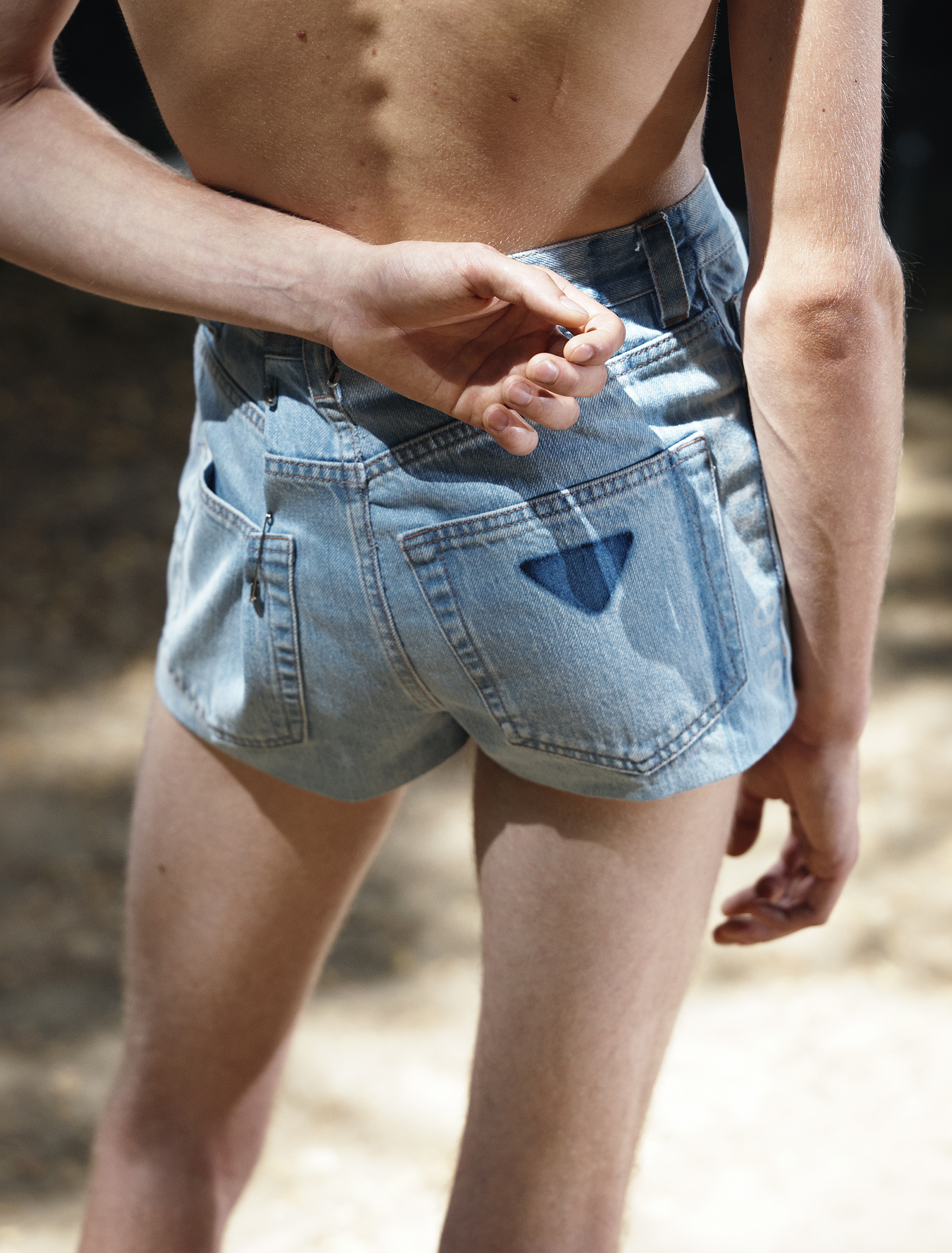
Kenneth Richard: Sounds like a very meaningful project. Love to learn more about how you and fashion intersected. How did you find your calling in fashion and what drove your interest in it?
Willy Vanderperre: When I was 16, Belgium was in the midst of the its fashion revolution with the Antwerp 6, they were like rock stars. You would read about them in the newspapers, in magazines, see them on TV. They were the first to reach that status in Belgium. I was very impressed by them. Growing up in a small, grey, and dangerous border-town (borders still existed in Europe at that time), fashion became my way of revolting against everything and everyone around me. Fashion became very important for me. It is a form of expression, very straightforward and seen but at the same time a perfect shield, a form of protection. People in my hometown got a little scared of me and because of that, weirdly accepted me more. At that time, you act like you don’t care, if you aren’t fully accepted, but you kind of do. Even the bullies, the one you really didn’t want to mess with, accepted me for who I was.
The town I grew up in was a tough one. There was a lot of drugs, aggression and violence. With my appearance, I was accepted as the weird guy, even my sexual orientation didn’t matter, and here I must add the word anymore. It also build on my character, to walk the streets like I dressed, to attend school in the outfits I wore, I knew I stood out, didn’t blend in. I was very aware of that and that strengthened me. This language, this way of expression became really important and ultimately a defining reason for attending the fashion school in Antwerp.
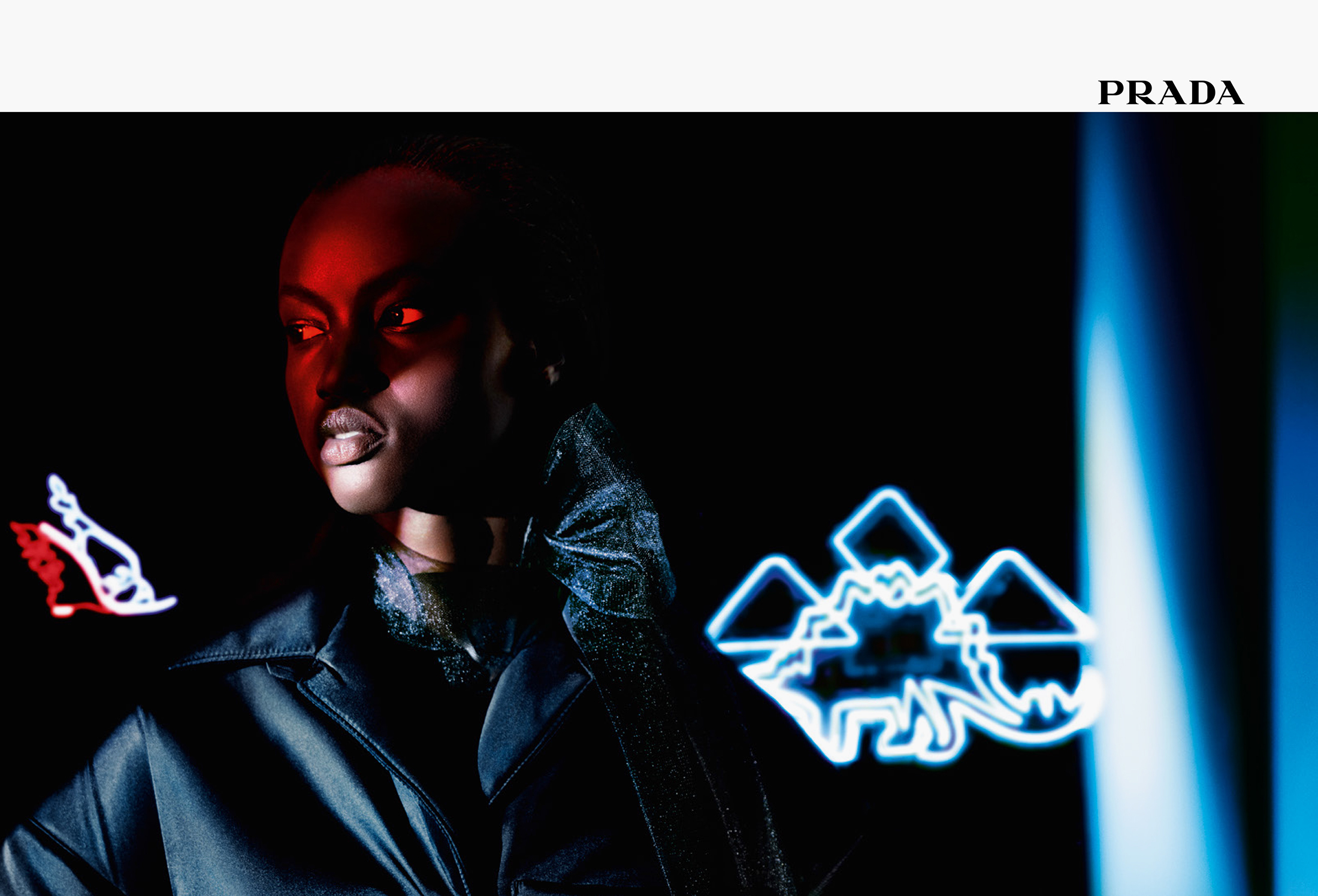
Kenneth Richard: That helps to explain why your work covers personal narrative, often touching upon isolationism and coming-of-age. It makes me wonder if you have a personal collection of work that is just for yourself?
Willy Vanderperre: Yes, isolationism and coming-of-age are indeed recurring as I am obsessed with youth and its innocence, exploration, experiments and everything that comes with that period in your life.
To me the two are combined, isolationism and coming-of-age. It is the time where you first question your actions, your thoughts and your feelings. It is completely self-reflective, you can even say selfish. It is all and only about you. There is such a beauty in that feeling, feeling lost and misunderstood, like your first sexual experience for example. It is the first of everything.
By “personal collection”, do you mean pictures I’ve taken that I don’t share?
Kenneth Richard: Yes.
Willy Vanderperre: Yes, I do keep some images private. I love to share but that doesn’t mean that everything needs to be shared with the rest of the world, a mistake taken by a lot of people today. Some images are too personal to share with other people.
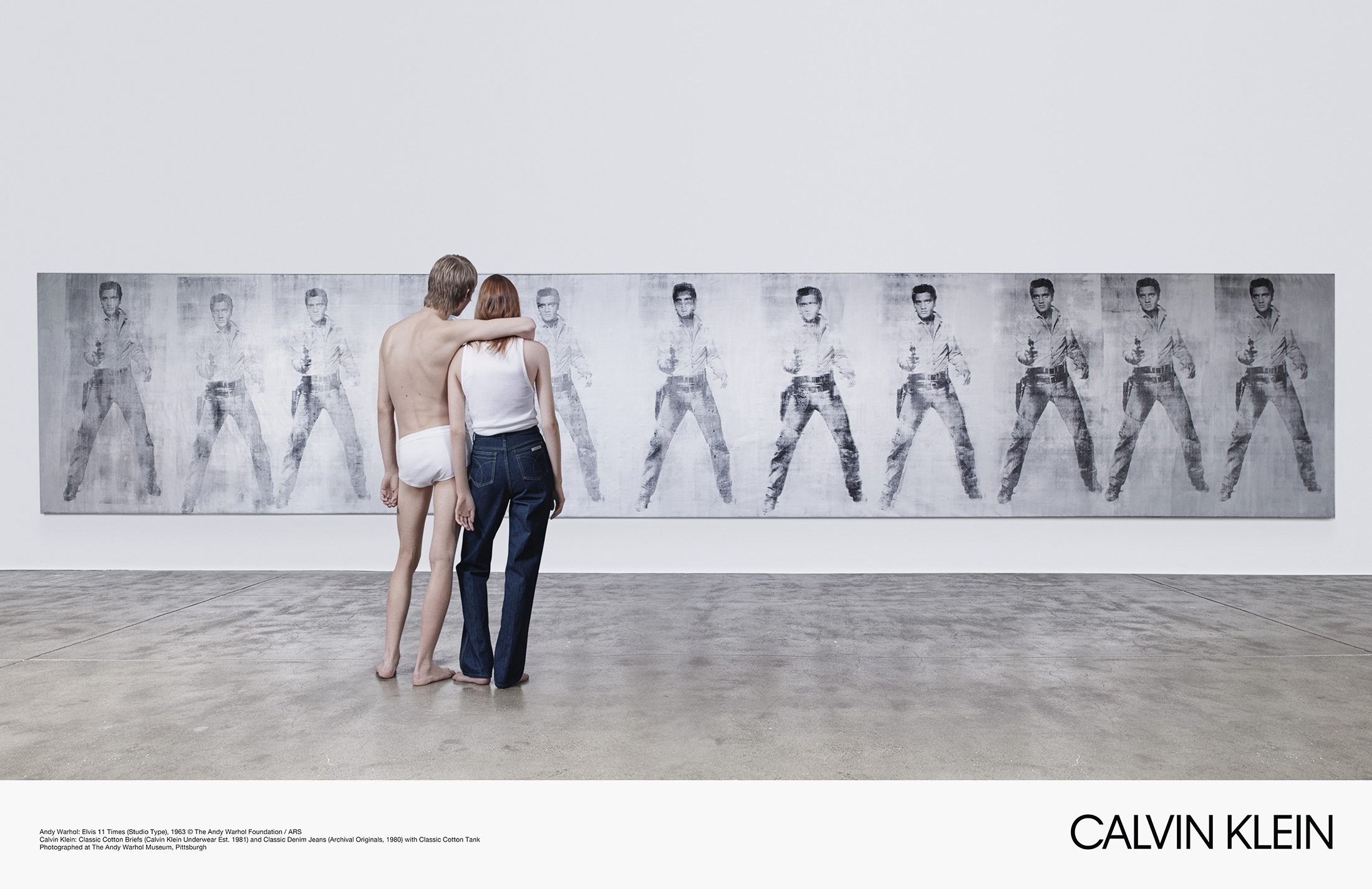
Kenneth Richard: We meet many fashion artist who only speak to fashion, but your work covers everything from dance to art. How do you spend your free time exploring the arts and why?
Willy Vanderperre:
Photography is art, hell, let’s just say it, fashion photography is art. Or at least a form of it. When given the right amount of creativity and thought process, fashion photography is as relevant and defining as art.
When we go and see for example, the Flemish masters or an artist like Granach with his uber detailed paintings, when he painted that portrait, the subject would have been dressed in the highest of fashion. If the medium photography would have existed, I am sure that those portraits would have been photographically taken. People tend to look down on fashion photography, but it is equally important to me as any other art form. On the other hand, thinking of myself solely as a fashion photographer would be too limiting for me. I like to think forward, I am obsessed with progression and the future. I don’t really like to look back. Of course, I use past experiences and emotions to translate the now, but I love technology. It’s one of the reasons why I instantly embraced digital photography, it’s also why I was in awe when Tesla launched the electric car and was in complete suspense when InSight landed on Mars, not to talk about the missiles landing back on earth. I know I like to be moved, angered, touched, annoyed by something I see or witness. From dance to painting to theatre. All these forms of expressions and sharing are interesting to me.
I am currently writing the script (finalizing is a better word!) for my second short feature, it was written straight after I wrote “Naked Heartland” but I had to put it away, the idea needed time to ripen, I feel it is time to pick it up again.
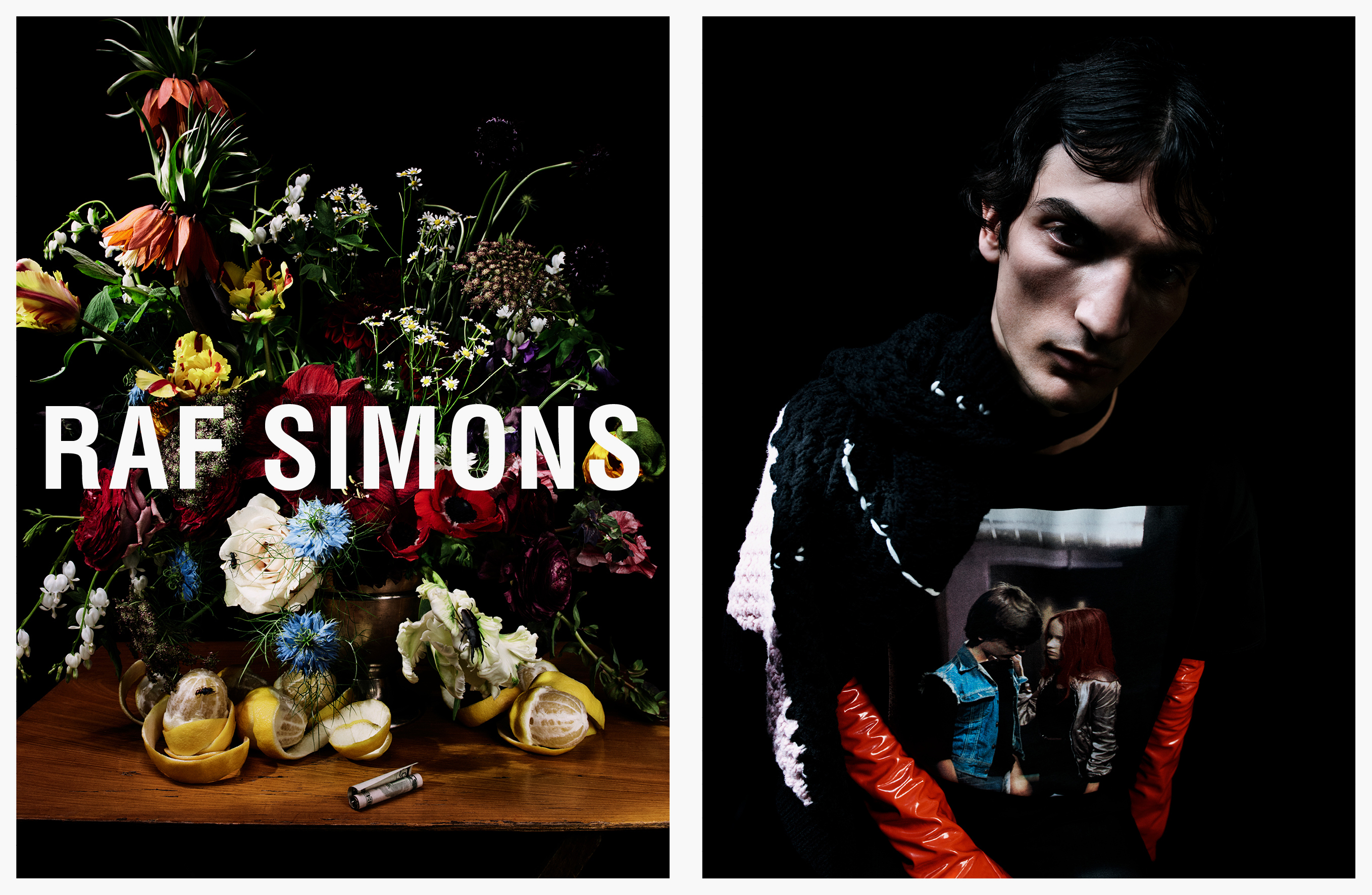
Kenneth Richard: I definitely want to chat about Naked Heartland but that Raf Simons art reference has me thinking about ads first. Your behind some iconic campaigns from Prada to Calvin Klein, each with their own distinctive DNA and teams. What is your process in teaming with others?
Willy Vanderperre: A creative one. They start with talks and exchanges, sharing and brainstorming. The creative people behind those brands have such an amazing thought process and way of thinking that listening to them speak is already an enriching experience. To take it to the next level of picking each other’s brains is mind-blowing. Like you say both have a distinctive language, to find new ways to approach it is always exciting and challenging.
I am all about teamwork and do not believe in going it alone. That is the beauty of the work we produce together. The conversation, the thought process, again…the sharing. Every picture is about teamwork. Even if you are alone with your model/subject, it is the language between the two of you. I would be nothing without my team. They mean everything to me.
A shout out to the team of people around me: Romain Dubus, more than my light technician and first assistant, my right hand. Also Henri Coutant, my digital technician and Elisa Allenbach, Stephanie Jaillet, Maxime Miller and Stephane Virlogeux, the people I trust with the post production. These are the core people all somehow involved in everything I do. Next to them is Billy Albores my agent and Lieze Rubbrecht my new studio manager. Summing these people up, makes me reflect on how extremely proud and happy I am to have these amazing talents next to me. It is humbling. I could go on add producers, who are and have been always there and of course stylists and hair an make-up. I am very fortunate to have people who understand, create, make evolve and challenge the work. I could not end this train of thought without mentioning Olivier Rizzo, who is everything to me on each possible level.
Kenneth Richard: Quite a depth of talent to team with and we love a nod of thanks as you said, no person works in isolation. So let’s talk digital for a second. You released a book in 2015 entitled 635 that was based on your own Instagram. Curious on your taken on Instagram today and how it has evolved, or even if it has, since your book released?
Willy Vanderperre: First off, the square is gone. It was literally a couple of days after the launch of the book, which made it a testimony of time. It was great bonus. I knew when I was planning to launch my first photographic book, it had to be something different than a usual well curated book of images. On Instragram I don’t curate, I just post stuff I like, images that just came out, teasers, but in random order.
The 635 book was pulled from Instagram, I didn’t change any images, not even the quality of them. It felt honest and direct, two words I like. It was also my fist collaboration with IDEAbooks. They reached out to me at the end of August and by mid-September there was a launch of the book in NYC. It was very Insta! But going back to the gram, the minute it becomes a commercial platform….it no longer belongs to the kids, who made it big. Sadly enough it has become a professional tool for many. The weight put on the importance of the number of followers is insane. For kids and youngsters it is everything, they don’t really grasp that there is a parallel, but virtual, reality. As for business, I am convinced that a follower is not always a customer. A ‘like’ is not always sincere. Mostly it is validation for the liker. That he belongs to this community, that he shares the same taste-level, even if in real life his identity and real life situation can be completely the opposite. Nevertheless I do like the medium, it is now but maybe already more yesterday.
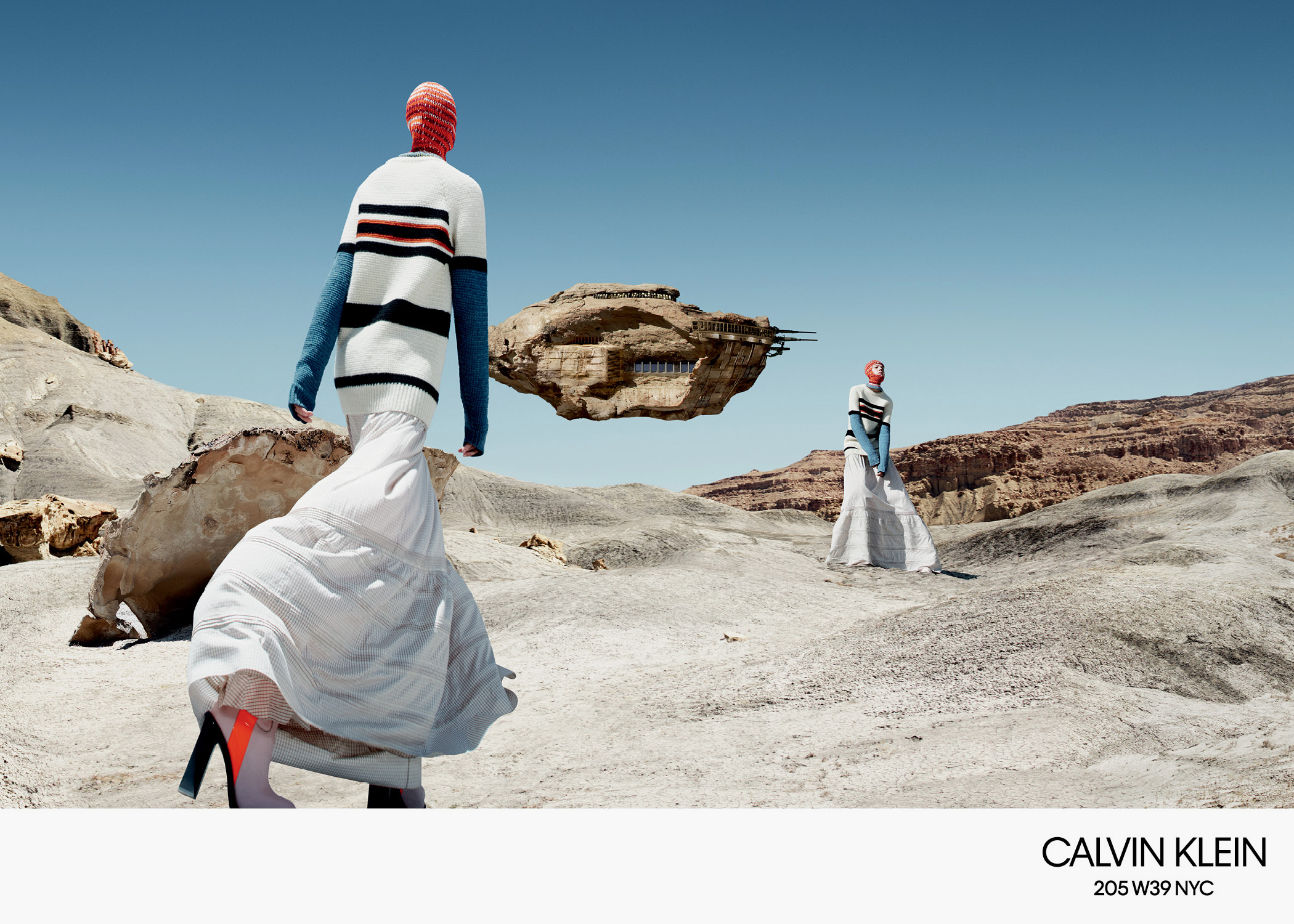
Kenneth Richard: How much of the narrative today do you build for digital only and how is it different from the work you’ve done in the past?
Willy Vanderperre: I like to think I treat every platform with the same energy and attention. I don’t change my approach to the work. Changing the work only weakens the expression. Nevertheless I do feel that each plan has his own distinctive voice, so the work might vary in that sense.
Kenneth Richard: Film has become a big part of your creative output, how is creating film different today than yesterday?
Willy Vanderperre: In fashion, film now has finally gotten a voice. Even in your question, the word has become ‘film’, whereas, before we talked about ‘moving image’. Moving image was just a still that moved left to right. It had no narrative content and only existed to showcase the product. Sadly enough, some houses still work on that principle.
Others, who see the potential in film, create a story, a narrative, where yes, the promotion of the garment and bag is of importance, but not in an obvious way. I think this direction is richer, as it seduces the audience in a completely different way.
I am always a believer that a person who watches a fashion film by a certain brand already knows and is interested in the brand. To treat your audience with intelligence is respectful. Luckily a lot of brands think like that and have evolved to film in a very short time. Nowadays, I cringe when I see a moving bag, it really dumbs down a fantastic medium. Now, film includes a narrative, a storyboard and editing that is more time consuming, but way more rewarding. It is a medium I love.
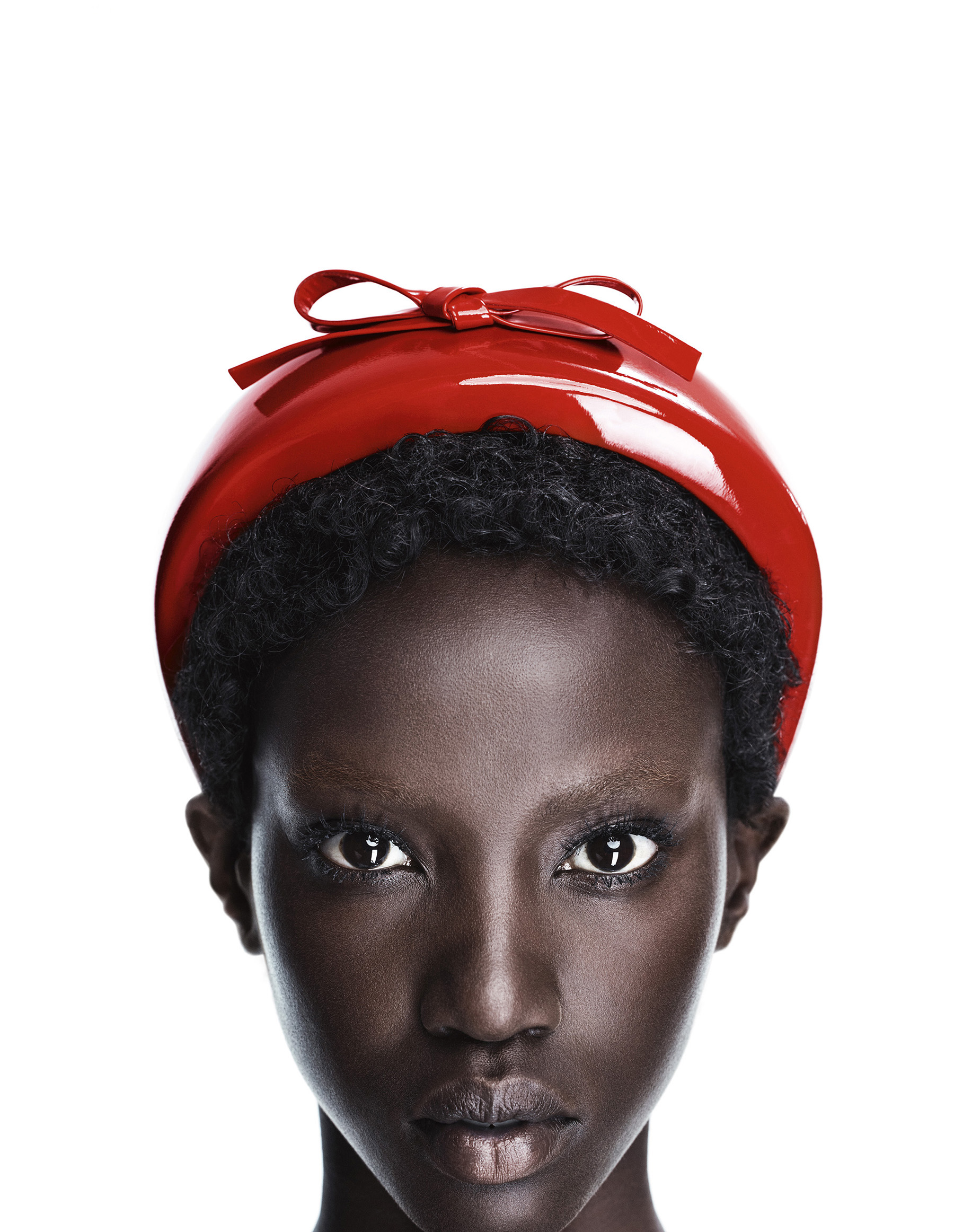
Kenneth Richard: Which brings us back toyour Naked Heartland film. Can you share with us how came about?
Willy Vanderperre: It was a project that I wanted to create a long time ago. It became more concrete after the Breivik ( 22 July, 2011 ) attacks and how he became a celebrity. How his name will never be forgotten and how the kids that got killed were never even mentioned in world press. This following Columbine and other massacres. These all involved kids, who at the time of the unexpected violence, maybe experienced a first kiss, a first break-up, a significant moment in their lives. It is also the most autobiographical project I have worked on. It deals with the region I grew up in, the isolation of it. The solitude and isolation of puberty and the insecurity of that time in your life. I wanted to treat it as a visual poem, open to interpretation.
Its score is written by AMENRA, who comes from the same regions where I am from and especially their album Mass V, which inspired me in writing the script. If you listen to it, you can feel the isolation, desolation and rawness and at the same time poetry of the region in that album. I was honored that they collaborated on it. I also knew when I wanted to do shoot ‘Naked Heartland’ it had to be with Nicolas Karakatsanis, a director of photography whose work I admire a lot. It was very enriching to have these people around me at that time, as they understood my language and the story I wanted to tell. I am excited that the same core people that were on the first adventure, even after its creation 3 years ago, are keen and excited to work with me on the next one, as I am currently finishing preproduction.
Kenneth Richard: Sounds exciting and congrats. Where do you think people should be focused to get creative right over the next few years?
Willy Vanderperre: From their gut, without any fear of judgement. Only then can you talk about getting creative right.
Kenneth Richard: Good call out. What’s the next big project you are looking forward to?
Willy Vanderperre: The next book, the next show, the next film, the next campaign, too many things to mention that I look forward to on a professional level and on the other hand, the next holiday, the next dinner with my friends, the next concert…also so many private things. I am always hungry for the next thing….but also here I am extremely happy with the now, as it is, as it stands.. and not caring about the next thing and just enjoying this moment.
